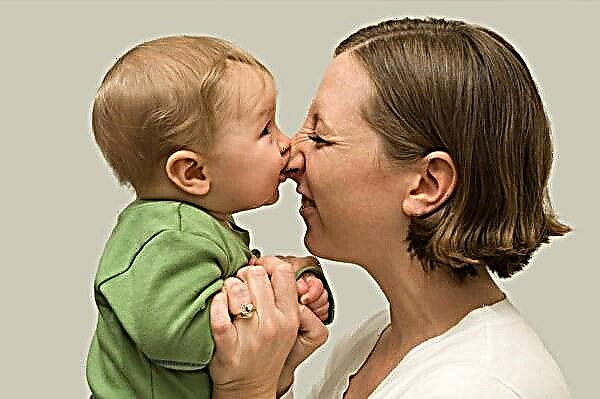
Inflammation of the ears in childhood is a frequent phenomenon, because otitis media is facilitated by the anatomical features of the structure of children's hearing organs. According to statistics, up to 90% of children have suffered from otitis media at least once before the age of 7, and therefore it is important for parents to know what are the features of treating this disease at home.
About pathology
The hearing organs are quite complex. They have three main sections: the outer ear - the auricle, the middle - the eardrum, the cavity and the auditory ossicles, the inner - the labyrinth and the auditory nerves that go directly to the brain. Any of the departments can become inflamed. And in this case, they talk about otitis media, indicating in which department the inflammation occurred: middle, external or internal otitis media.
The frequency of childhood otitis media decreases after about 8-9 years. By this time, the hearing organs of children have developed and become identical to adults.

Causes
Inflammation in the organs of hearing in children develops for a variety of reasons. It can be both trauma and hypothermia, but most often otitis media occurs due to the fact that pathogenic microbes, viruses, fungi, liquid enter the ear. Moreover, most often otitis media does not develop as an independent disease, but as a complication.
Why this happens is easy to understand: in case of illness, the child actively sniffs, sneezes, and the contents of the nasal passages can easily get into the auditory tube. The environment there is very favorable for the development of the inflammatory process.
The auditory tube in children has its own characteristics, with which the frequent incidence of otitis media is associated: it is located almost horizontally, it is short and wide, and therefore any fluid is easier to throw into it. When a child becomes a teenager, the auditory tube lengthens, narrows and becomes almost vertical, and therefore adults are less likely to suffer from inflammation of the hearing organs.
With flu, SARS, adenoids, the nasal mucosa swells, it is difficult to breathe with a nose, and therefore the ventilation of the auditory tube is impaired. Viral otitis media as a complication of chickenpox or measles is also quite common. Children with diseases of ENT organs suffer from otitis media more often, and this is a proven fact.
More often than others, parents of children born prematurely, often suffering from colds, as well as babies who are prone to pressure drops (flying on airplanes, diving, swimming) encounter childhood otitis media.
The outer ear can become inflamed by itself, without concomitant diseases, but otitis media and internal otitis media usually develop against the background of other diseases, and this should not be forgotten when planning treatment for a child at home.


What are the symptoms and signs?
It is very simple to recognize the otitis media of the external ear: an inflammatory process occurs outside, in the area of the auricle, sometimes boils appear on it. The pathological process is able to spread to the behind the ear region. The disease can proceed without temperature, as well as at temperatures up to 38 degrees and even higher - this is quite individual.

With acute otitis media in children, severe pain in the ear is observed, which becomes stronger when trying to move the head, chew, and speak. Catarrhal otitis media (non-suppurative) is both unilateral and bilateral. Exudative purulent otitis media is also capable of affecting both one and both ears.
But most often, it is the one-sided form that develops in children.
In addition to pain, a rise in temperature may begin, lethargy, tinnitus and a decrease in the perception of sound information are observed. With a purulent form, the most severe pains precede the violation of the integrity of the tympanic membrane under the pressure of pus, after which the contents flow out and the condition improves.

Otitis media most often develops as a complication of severe secondary, and the process in the labyrinth is purulent, serous and necrotic. With it, there is a deterioration in the child's condition, vomiting, loss of balance, a strong decrease in auditory function.
It is this otitis media that most often leads to the development of persistent hearing loss in the future.
After external and otitis media, hearing will return; after internal purulent, it is usually not possible to completely restore it.

In infants, it is somewhat more difficult to recognize inflammation in the ears that has begun than in boys and girls, who, due to their age, are already able to clearly formulate the presence of pain in a certain part of the body. A child of infancy cries piercingly from pain in the ear, screams, it is almost impossible to calm him down.
Regardless of whether viral, microbial or other otitis media has developed, the baby's body temperature rises. When trying to suckle or bottle-feed, the pain in the ear gets worse and the baby stops eating without being full, leading to another crying attack. Sleep and appetite are disturbed. The child looks painful, can constantly fiddle with his ear. When pressing on the "tragus" - the cartilaginous protrusion in front of the entrance to the ear - the pain increases.

First aid
If a child has ear pain, parents should clearly understand that age in this matter is a very important factor. If the child is breastfeeding, small, newborn, then he has from acute catarrhal to purulent otitis media - a stone's throw. Sometimes just a few hours are enough for one form to flow into another. If the baby is already 2–3 years old, then the disease will not develop at such a rapid rate.
That is why young children need to call an ambulance, and a child after 2 years must be shown to a doctor as soon as possible.
Considering that most often ear pain starts at night, when the clinic is closed, it is important to know the rules of first aid for otitis media.
First of all, parents should not drip anything in any quantity into their ears. Ear drops are an important part of therapy, but only when the membrane is intact. If it is damaged, the medicine will only harm the child by getting into the maze. Therefore, you should not even try to examine the membrane and assess how intact it is - this is the task of a doctor with an otoscope (a special device). If pus, blood, serous fluid flows from the ear, it is not necessary to drip even more - this is a sign of a violation of the integrity of the membrane.
Dry compresses, popular among the people, cannot be applied before being examined by a doctor. You can only warm up when the form is catarrhal. If suppuration is present, rewarming will intensify the process of pus formation. Do not give children sleeping pills, pain relievers.
To properly provide first aid before being examined by a doctor, you should:
- lay the child down with the sore ear or take it on the arms, if it is a baby, pressing the sore ear to the arm or chest - this will help the baby to calm down a little;
- in both nasal passages, you can drop a drop of nasal drops with a vasoconstrictor effect, for example, "Nazivin" (such drops will help in narrowing the vessels and the auditory tube, which will slightly reduce the edema);
- from the temperature you can give a medicine with an antipyretic effect, it is desirable that it would be "Paracetamol".
These measures will help you wait for medical attention.


When is home treatment acceptable?
Treating otitis media at home is allowed in almost all cases. Exceptions are exudative otitis media in infants and purulent internal inflammation. In this case, it is better to go to the hospital at the suggestion of doctors, because there the child's condition will be monitored around the clock.
The question of whether it is possible to let the little patient go to be treated at home is decided by the ENT doctor, who be sure to examine the sore ear with an otoscope. If something flows from the ear, then a sample of the leaking fluid is taken for bacteriological analysis (bacterial otitis media is contagious!).
It all depends on how difficult the inflammatory disease is, what diseases accompany it. In some cases, the child it is recommended to do a computed tomographic examination of the temporal bones, and if the hearing is severely damaged, then an audiometric examination by an audiologist.
Severe forms of otitis media require supervision of a neurologist.

Basic principles of therapy
Otitis media is treated conservatively. An exception is the situation of purulent otitis media, in which the membrane turns out to be very strong and does not want to perforate in any way. In this case, a simple procedure is carried out in a manipulation room - a puncture of the membrane, followed by rinsing the middle ear cavity with medicinal solutions. Next, the child is prescribed home treatment.
The basic principle is to reduce pain, reduce inflammation. Drops with analgesic and anti-inflammatory effects help in this. If bacteria are to blame for the disease, then they are treated with an antibiotic, more often topically, in drops. But sometimes the systemic administration of an antibacterial drug in tablets or in the form of a suspension can also be prescribed.
Drops, as we remember, are permissible only with a whole membrane. Most often, children are prescribed drugs such as "Otofa", "Tsipromed", "Otinum", "Otipax", furacilin alcohol, for pain relief - "Lidocaine" in the ear. Before burying them, the bottle must be warmed in the hand so that the temperature of the liquid in it is approximately equal to body temperature. This will make the procedure more pleasant and effective. Dripped from 2 to 4 times a day, depending on the degree of the disease.
It is important to adhere to the principle of pairing: if the right ear is being treated, the medicine must be instilled into the left ear.


Among the systemic antibiotics for purulent microbial otitis media, most often recommended are "Amoxiclav", "Flemoxin", "Flemoklav". After the start of taking such drugs, there is usually a noticeable improvement within a few days.
Here, the main thing that is required of parents is not to quit treatment, being glad of the improvement. This can lead to the fact that some of the pathogens of the disease will survive and will have antibiotic resistance.
Then it will be very difficult to cure the second wave of otitis media caused by "hardened" microbes.
If only the outer ear is inflamed, use warming dry cotton-gauze compresses (in the absence of pus), a cotton swab moistened with anti-inflammatory drops, such as Norfloxacin, is introduced into the sink. If the inflammation does not go away within 3-4 days, surgical opening of abscesses and treatment with ointments with an antibacterial composition is indicated.
When treating otitis media, it is important not to forget to complete all recommended instillations on time. It is advisable not to bathe the child during treatment, not to go for a walk when the temperature rises. After the pain has passed, you need to get a referral to the physical room for physiotherapy to improve ventilation of the auditory tube, electrophoresis.
If the otitis media is internal, the child is injected with antibiotics intramuscularly, the administration of the corticosteroid hormone Prednisolone is often shown to save hearing, and then drugs that help increase the blood circulation in the labyrinth: Neuromidin or Vestibo.
It is very important to monitor the child's hearing. If the loss progresses, it is necessary to urgently address the issue of wearing hearing aids, to diagnose the real degree of decline in hearing function.

Compresses for otitis media are done only if the otitis media is not purulent. For their children's version, only gauze and cotton wool are needed - alcohol solutions for compresses in childhood are not used.
Doctors do not recommend resorting to folk remedies for the treatment of ear inflammation in children.
Anyway, they do not give permission for this, especially if children have a fever, the pain is intense, there is pus. If permission is still received, then you can use with great care aloe juice, diluted half with saline, for instillation in the ears, a compress on the ear with warm vegetable oil, for children after three years - compresses with camphor oil.

Relapse prevention
In order not to get sick again after recovery, it is recommended to pay special attention to the prevention of recurrent otitis media. For this, it is important to vaccinate "Prevenar" against pneumococcal infection, sometimes, when the causative agent of ear inflammation is pneumococcus, it helps to reduce the likelihood of inflammation and severe consequences.
When a child has a runny nose, it is important to teach not to sniff in order to avoid getting nasal mucus with bacteria and viruses into the auditory tube. Do not clean your child's ears with cotton swabs, as this significantly increases the risk of injury to the eardrum.

A baby should not be laid down immediately after eating or drinking. This will help not only reduce colic, but also prevent otitis media caused by the ingestion of some of the baby's belching after eating into the tube.
The opinion of Dr. Komarovsky, like many other pediatricians, on this score is as follows: in order to maintain the health of the ears, it is important to timely and correctly treat all ENT diseases (from the common cold to adenoids). While swimming or bathing, a child must not swallow water, especially when it comes to river or sea water.




